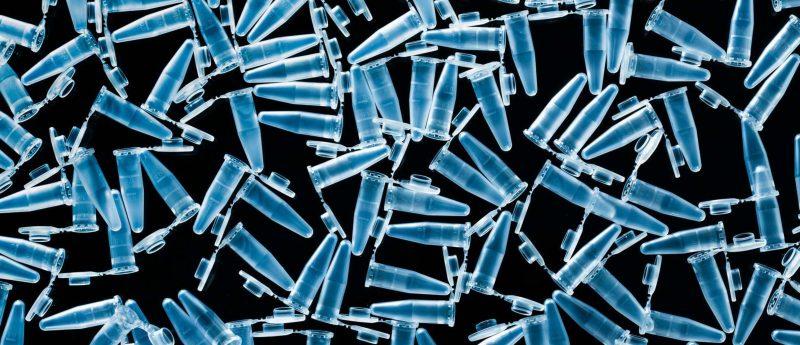Building a cryopreservation toolkit: an interview with Allison Hubel

 In this interview with Allison Hubel, the President-Elect of the Society for Cryobiology (MD, USA), we discuss why the preservation of cell therapies cannot be a one-size-fits-all and instead requires a toolkit of options. Allison also gives her insights on the need for assays to be validated on frozen and thawed cells in order to accurately reflect the long-term viability and function of cell therapy products and provides us with a glimpse into what the future of cryopreservation might hold.
In this interview with Allison Hubel, the President-Elect of the Society for Cryobiology (MD, USA), we discuss why the preservation of cell therapies cannot be a one-size-fits-all and instead requires a toolkit of options. Allison also gives her insights on the need for assays to be validated on frozen and thawed cells in order to accurately reflect the long-term viability and function of cell therapy products and provides us with a glimpse into what the future of cryopreservation might hold.
Please introduce yourself and tell us about your research and role as President-Elect of the Society for Cryobiology.
I am happy to introduce myself as Professor of Mechanical Engineering and Director of both the Technological Leadership Institute and UNITE Distributed Learning at the University of Minnesota (MN, USA). My research is in preservation of cells and tissues, in particular the preservation of cellular therapies. My research has spanned the development of improved protocols for preservation, understanding molecular mechanisms of damage during preservation and development of technology to improve preservation outcomes. My lab pioneered the use of Raman spectroscopy at low temperatures to quantify cell responses to freezing. I have adapted a differential evolution algorithm to the problem of optimizing cryopreservation protocols. That algorithm has been used to develop new and improved methods of preserving a variety of cells used therapeutically. I was also a co-principal investigator for an NHLBI-funded training grant on cell therapies and therefore involved in the workforce development for the field of cell therapy. Finally, I am the author of Preservation of cells: a practical manual, which helps individuals and organizations improve their preservation practices.
My role as President-Elect of the Society for Cryobiology has involved fostering the field of cryobiology and serving the needs of its members across the world. To that end, the society is involved in publication of the scientific journal, Cryobiology, as well as an annual meeting focused on the latest developments in the science of cryobiology.
You spoke at cryo2022 about dimethylsulfoxide-free preservation of iPS cells and iPS-derived sensory neurons. Can you briefly explain the motivation behind the removal and reduction of dimethyl sulfoxide (DMSO) in cryopreservation protocols?
There are three basic reasons why it may be important to remove DMSO:
- Poor outcome: Not every cell type responds well to DMSO, for example neuronal cells. If you cannot achieve the desired post thaw recovery, you may need to try a different approach.
- Inability to integrate DMSO into the overall workflow: DMSO is toxic to cells – neuronal cells are very sensitive to exposure. When exposed to DMSO, cells lose viability with time. For certain cell therapy products, that loss in viability with time may be too high and DMSO cannot be used.
- Patient safety: Adverse reactions to the infusion of DMSO are well documented in the bone marrow transplantation literature. The nature of the therapy and the location of administration may mean that DMSO cannot be used for patient safety reasons. Additionally, cells containing DMSO cannot be injected into the brain, a common location for neuronal cells used therapeutically.
What are the implications of this work on the translation of cell therapies?
Preservation of cells is a critical element of the cell therapy supply chain. There may be issues of storing source material for a cell therapy, such as an apheresis product, as well as the completed product. Having a toolkit of options for preserving cell therapies will be critical in the development of fit-for-purpose preservation protocols for cell therapies. There cannot be a one-size-fits-all preservation protocol as the biology of the cells being used therapeutically and the clinical application of the cells varies greatly.
What do you consider to be the greatest challenges hindering the field of cell and gene therapies from the perspective of cryopreservation?
There are two challenges that go hand in glove and cannot be separated. Firstly, the development of new improved protocols for preservation. Secondly, training of individuals in preservation best practices. We are asking much more from cells than we have in the past. We need to have protocols that retain viability (membrane integrity) as well as function. Preservation protocols are based on scientific principles and people need to be trained in those principles so they can implement them using best practices. There is little understanding of the scientific principles behind preservation and the best practices that implement that understanding.
What do you see as the biggest area of growth in cryopreservation?
Everything. The field of preservation has not experienced a quantum improvement since the 1970’s. There need to be improvements and growth in every aspect of the field including equipment, containers, reagents, protocols, and workforce development.
Do you have any last comments?
The entire field of cell therapy has been challenged to create cell-based assays that reflect the potency of the product. I will add to that challenge by indicating that these assays need to be applicable to cells that have been frozen and thawed for products that are frozen. Some of the struggles with developing new and improved methods of preserving cells rests with the development of assays that are meaningful and can be used quantitatively. The stresses of freezing and thawing can result in profound changes in the cell. It is common for people to use an assay validated on cells in culture and apply that to frozen and thawed cells. It should come as no surprise that the assay does not reflect long term viability or function of a frozen and thawed cell. If an assay does not reflect function or persistence of a frozen and thawed cell, it is likely that you are using the wrong assay or implementing incorrectly.
Disclaimer
The opinions expressed in this interview are those of the interviewee and do not necessarily reflect the views of RegMedNet or Future Science Group.
This article is part of the RegMedNet Spotlight on cryopreservation. Click here to view the full feature and discover expert insights on this >>>